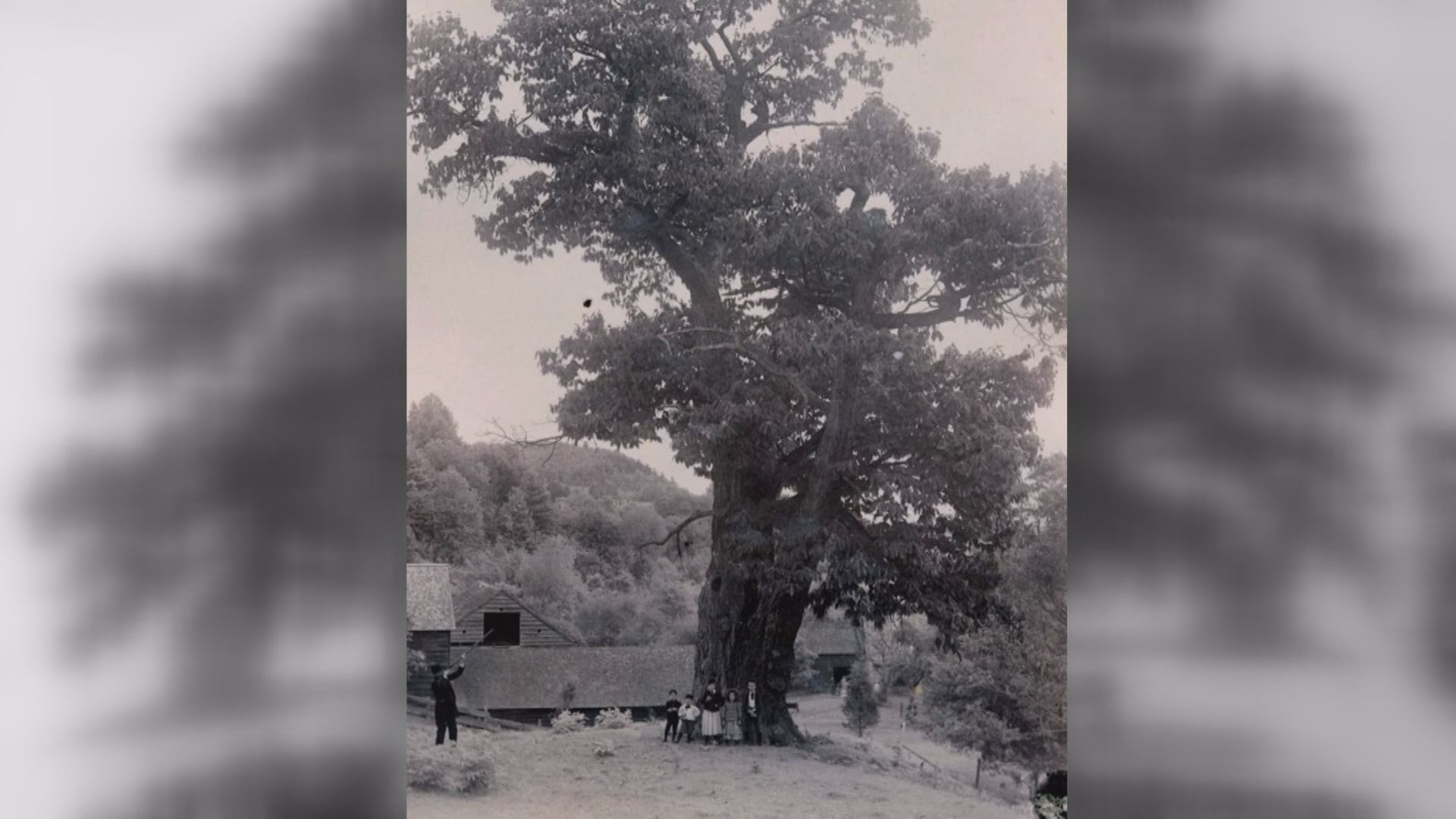Loudoun County, Va (WUSA9) — The American chestnut was wiped out a century ago. It had dominated America's eastern forests, providing wood, shade and food for animals and humans.
People in Appalachia made a way of life selling the nuts to cities. The trees were enormous, up to 150 feet tall and ten-feet wide with beautiful white flowers. Their resistant wood was perfect for building anything. It has been said that the American chestnut built America.
The nuts were hard to get since the trees were so tall, immigrants from Europe introduced the much smaller Chinese chestnut.
The imported tree brought a fungus blight that killed four-billion American chestnuts in 40 years.
The chestnut blight has been called the greatest ecological disaster to strike the world’s forests in all of history.
But the American chestnut may be on the threshold of a rebirth. On Friday, volunteers at Loudoun County's Banshee Reeks Nature Preserve planted disease-resistant seeds with the hope of restoring the tree.
"The nut has a flat side, so when it falls out of the tree, nature told it which way to land," explained Cathy Mayes, the president of the Virginia American chestnut Foundation as she dropped a chestnut into the ground.
The nut is one of 800 chestnuts that came from a project 40-years in the making.
"This is on of those species that we actually are hopeful of returning to the forest," she said.
Those nuts came from cross-breeding the Chinese and American chestnuts. The Chinese trees have a recessive gene the protects them from the blight.
"They came up with a plan for multiple generations of breeding to bring out the blight resistance, and preserve the American chestnut characteristics," said Mayes.
The American chestnut is shade tolerant and grows well in forests, the Chinese tree is not.
"So this is a Darwin experiment right here? Exactly right. We're playing God. We're forcing evolution, that's exactly right."
These trees are the grandchildren of trees from this part of the state.
"So when we grow these up they will produce the seed that we will use to reforest Appalachia in this part of the state," she said.
Only a small percentage of these trees will have the right genes to survive.
"We're going to let them fight it out. We'll probably end up with just a handful of tree out of this field. But a chestnut produces 6,000 nuts every year, so you don't need a whole lot to do serious reforestation," said Mayes.
It takes 120 to 400 years for an American chestnut to reach full height.
Even though there's no chance any of us alive today will see that, it's all about protecting the future by bringing back part of the past.


